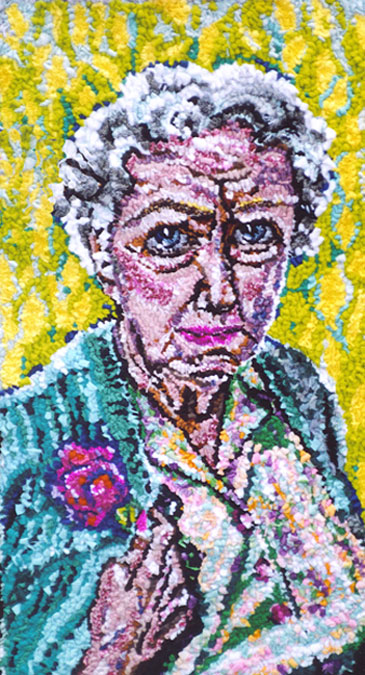Clothing and Memory

Copyright © Linda Friedman Schmidt, “Before and After,” detail, discarded clothing
Clothing Registers Memory
Clothing is an emotional trigger that carries, stores, and records memory, conjures tactile memory, stimulates sensory and emotional memory. Its close contact to the body gives it the the ability to hold personal and intimate stories from the past. Worn clothing represents traces of lives lived; it is alive with everything it has witnessed, evokes deep feelings, can tell real life tales. Once intended to conceal, the clothes I use to create my artwork reveal and unfold a personal narrative woven from disturbing recollections.
Wearing Traumatic Memories
Epigenetic science tells us that traumatic experiences in our past, or in our family’s past, leave scars adhering to our DNA. These experiences are never gone, even if they have been forgotten. My early childhood was disrupted by trauma. Growing up I carried traumatic experiences and painful memories; I was “clothed” in sadness, uncomfortable in my own skin, itching to get free from memory built on traumatic episodes. Now I shed and shred clothing, the second skin. I deconstruct what I have been wearing, reconstruct and transform it.
Traumatic memory is like grandma’s vintage dress: I can wear it, or have it altered, or cut it up and create something totally new from the fabric.
Looking Back to Go Forward
Our stories are entwined with the stories of our ancestors. In order to move ahead with a fresh perspective, we must go back and learn from the the history of previous generations. When a fraught personal history looms in the background, it is difficult yet possible to move forward. Although the memories of childhood and my family’s past remain in my artwork, they have been transformed and reconfigured into something new whose whole is greater than the sum of its parts. They speak to the present while maintaining a conversation with the past; they look back to go forward.
Remembering as a Means to Forget
I am remembering as a means to forget. My depiction of memories on the surface of my artwork preserves them, while my process transforms them and enables me to forget them. I recreate what haunts me most, project my inner world onto the art, and thus rewrite a troubled history. Artist Louise Bourgeois knew that unraveling a torment through art was a guarantee of sanity. She titled one of her pieces “To Unravel a Torment You Must Begin Somewhere.”A key skill for resilience is honestly feeling and expressing emotions. This enables the artist to feel better and move forward with life.
The Material Becomes Witness
“There is no greater agony than bearing an untold story inside of you” – Maya Angelou. Traumatic memories long for the benefit of a witness who will give empathy and support. This witness need not be a human being. Since cloth takes on the energy, the memory, and the hand of the maker, the clothing I use to create my artwork bears witness in addition to the viewer.
The role of art as witness makes it a valuable record of personal and cultural history. It helps us to understand that the past and the present can effect the future.
“What’s Past is Prologue”
William Shakespeare’s famous line from The Tempest suggests that history repeats itself. There are unmistakable parallels between present global events and my family’s past; I see disturbing related patterns. My artwork illuminates these “wearing” times and how current events and my autobiography wear on me. I hold up a mirror to current human rights violations and to my memories derived from similar traumatic events. I create this artwork woven from distressing memory as a reminder of the consequences of unchecked evil and hatred, as documentary evidence of the psychological trauma of war, genocide, and displacement that gets passed on to future generations.

Comments are closed.